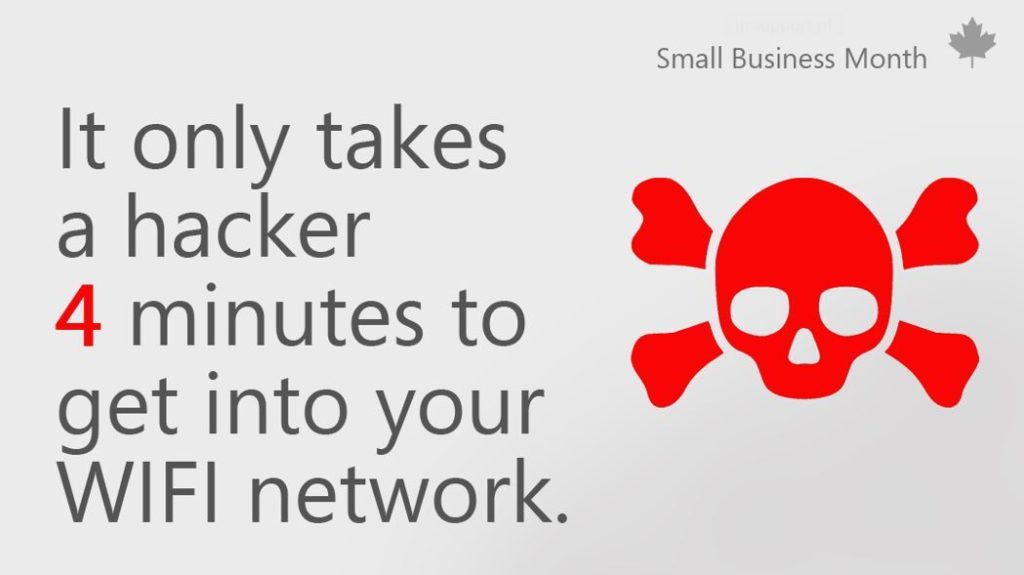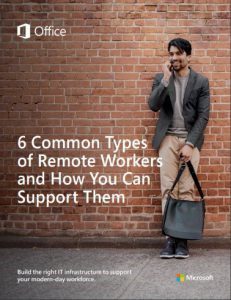
10 ways to stay secure on the go

Welcome to Day 6 of Business Self-Defense from Microsoft Canada. In this post about security on the go, we talk about how small and medium-sized businesses with employees who work in the field can defend themselves from hackers and other threats.
Mobile devices have changed not only the way we interact with our family and friends, but the way we work, and even the way we pay for things. These days you can do everything from one device, even simultaneously if your heart so desires. And while staying current with technological advancements makes sense for every business, it also opens your organization up to extra risks that you need to protect against proactively.
First: a reality check
With the number of smartphone users expected to reach over five billion by 2019, you should expect your employees to do their work tasks, including retrieving files, on their business and personal devices. While unrealistic to expect otherwise, that device double-dipping creates a weak link in your security. A modern BYOD (bring your own device) policy solves for that while often reducing costs and improving security.
Get the ebook
 Employees working remotely have diverse needs. The “6 Common Types of Remote Workers” ebook identifies six types of remote workers and how to support them with a secure and adaptable infrastructure. (Requires registration) Link here.
Employees working remotely have diverse needs. The “6 Common Types of Remote Workers” ebook identifies six types of remote workers and how to support them with a secure and adaptable infrastructure. (Requires registration) Link here.
Now, let’s look at 10 tips to help ensure you, your employees, and your customers stay safe on the go!
1) Stay up-to-date
Configure devices to automatically download app updates to ensure you always have the latest version of the software, including the newest fixes, patches, and improvements. Staying up-to-date ensures the security software stays current, thus better protecting the device against the latest known threats, no matter where should go.
2) Use modern tools
Modern, cloud-based tools, like Office 365 and Dynamics 365, give you and your employees access to data anytime, anywhere, which enables remote working. Plus, in the Microsoft Cloud, you stay protected with the latest software and patches.
3) Avoid “free” WiFi spots
We all love free WiFi, but it comes with risks. Someone else on the network can intercept your connection and try to access your device. These so-called “man in the middle” attacks enable hackers to relay and/or alter information. Especially nasty people even spoof entire hotspots if the mood strikes them. If you or your employees feel like they need to use public WiFi, ensure you use it via a strong VPN.
4) Watch what you install
Apps make our lives simpler and more productive. However, apps can ask for permissions to access various things on your phone, such as your camera, microphone, and your files. While sometimes necessary, giving them access makes you more vulnerable to hacking. Pay attention to what your apps ask to access and decide if the risk/reward tradeoff still makes sense.
5) Look where you charge
It may sound paranoid, but a USB charging cord can exchange data. When you attach your phone to an unknown device or power source, such as an airport or train, it could potentially let someone connect to your phone and steal important data, as well as leaving nasty things on your device. Whenever possible, charge devices in a secure, trusted place, such as your home or office.
6) Use smarter logins
Use multi-factor authentication on any device that has access to business data. Also, use trickier passwords or biometric logins to make your devices more difficult to open. The harder the mobile device to break into, the less likely someone will make the effort to do so. Also, get into the habit of locking your mobile device when you’re done with it.
7) Remote wiping
Did you know that, if you run the right software, you can “wipe” a device of its data if it goes missing, gets lost, or stolen? This one security feature can help prevent the wrong person from accessing your data, network, etc. Make sure your IT policy describes what to do when a device gets compromised, including who to contact.
8) Transact securely
Here’s one for retailers. Nielsen’s Canadian Mobile Wallet syndicated study found that 29% of Canadian smartphone users already actively use smartphones as a payment system. And why not? It’s very convenient and saves everyone time. Even so, businesses and consumers need to ensure they have security measures in place to transact safely.
9) Upgrade your POS
Unfortunately, according to Verizon’s 2016 Data Breach Investigations Report, POS breaches represent one of the most common types of cyberattacks. That’s because out-of-date systems rarely offer automatic/robust security updates. To do mobile payments securely, many businesses will need to upgrade their POS (point of sale) solution.
10) Embrace NFC & EMV
In addition to faster and safer technology, NFC (near-field communication) payments offer extra security for customers. EMV chip/pin cards transact more securely than cards with magnetic strips, making them almost impossible for criminals to copy data. Plus, payments made on the phone use tokenization—meaning random, not actual card numbers get transmitted.
Security on the go
You can introduce a solution like Enterprise Mobility + Security, which is part of Microsoft 365, to empower mobile employees, without complicated setup or IT management. Teams can configure different users and devices with policies and certificates to make sure the right people have the right access.
Stay in charge
Enterprise Mobility + Security gives you more control of your data. You decide who has access to it and control what they can and can’t see. When a new employee or contractor comes on board, for example, you can make the changes yourself. You can even get updates and insights into the latest threats aimed at your customers.
Get the ebook
 Employees working remotely have diverse needs. The “6 Common Types of Remote Workers” ebook identifies six types of remote workers and how to support them with a secure and adaptable infrastructure. (Requires registration) Link here.
Employees working remotely have diverse needs. The “6 Common Types of Remote Workers” ebook identifies six types of remote workers and how to support them with a secure and adaptable infrastructure. (Requires registration) Link here.




